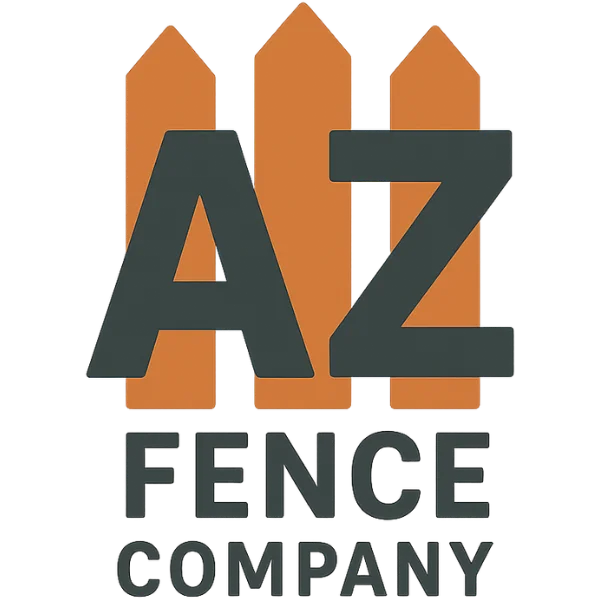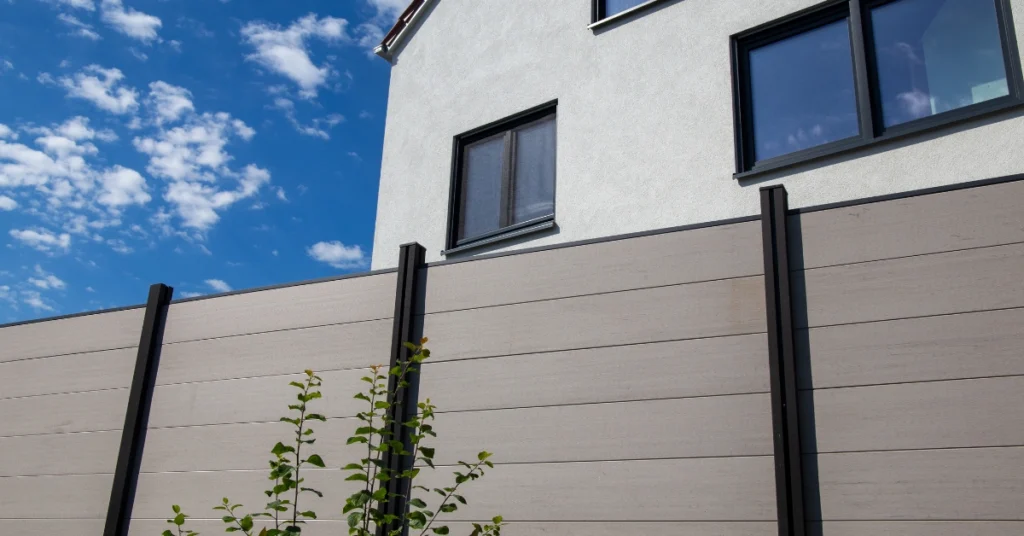A well-designed fence not only defines your property boundaries but also transforms your outdoor space into a private sanctuary that complements your home’s architecture. Arizona homeowners face unique challenges when selecting fencing materials due to the intense desert sun and extreme temperature fluctuations. The right fence design balances durability, aesthetic appeal, and climate adaptability while providing the desired level of privacy and security. From horizontal slat fences that make small spaces appear larger to corrugated metal options that offer a contemporary industrial look, AZ Fencing‘s solutions blend function with style.
Key Fencing Considerations for Arizona Properties
- Choose climate-appropriate materials: Vinyl with titanium dioxide for UV protection, aluminum for rust resistance, or properly sealed cedar/redwood for natural appeal
- Balance privacy needs with aesthetic goals: Consider solid panels for privacy, decorative cutouts for style, or board-on-board designs for added security with visual appeal.
- Incorporate shade strategies: Strategically place fencing to maximize shade in outdoor living areas while considering prevailing wind patterns
- Match architectural style: Select fence designs that complement your home’s exterior—wrought iron for Spanish/Mediterranean homes or horizontal slats for modern desert aesthetics
- Consider maintenance requirements: Evaluate long-term upkeep needs based on your available time and resources—vinyl requires minimal maintenance, while wood demands regular treatment
Essential Factors to Consider Before Installing Fencing Around the House

It’s extremely important to determine your property line before installation. This helps avoid property line disputes, which can be a nightmare come true. In Phoenix, you’ll need a permit for any fence or gate taller than 3 feet to meet local zoning rules. In addition, fences over 7 feet high require structural engineering analysis. Check with your HOA for regulations on fence height, materials, and design requirements.
Key pre-installation checklist:
- Verify property boundaries with official survey
- Check HOA guidelines and restrictions
- Obtain necessary permits (required for fences over 3 feet)
- Mark underground utilities before digging
- Assess soil conditions for proper post installation
Arizona Climate Considerations for Long-Term Fence Performance
Arizona’s climate creates unique challenges for fencing materials. Many homeowners take their fence for granted until they notice sections buckling, warping, or leaning to one side.
Climate factors affecting fence durability:
- Intense UV radiation causes material fading and breakdown
- Extreme heat leads to expansion and warping
- Minimal rainfall leads to dry conditions that stress materials
- Monsoon storms can damage poorly installed fencing
- Surfaces facing west/south receive the most intense sun exposure
Popular Fence Materials for Arizona Homes
Different fencing materials offer unique benefits in our desert environment. The right choice depends on your specific needs, budget, and maintenance preferences.
Wood Fencing: Classic Appeal with Desert Durability

Many Phoenix homeowners choose wood fencing for its classic look and flexibility in design. Options include privacy wood fences (6-foot solid barriers), picket fences (decorative with spaces between boards), split rail fences (rustic horizontal rails), and board fences (customizable with various patterns).
Cedar and redwood naturally resist rot and insect damage in Arizona’s climate, while pine requires more maintenance despite being more budget-friendly. For maximum longevity, seal and treat wood fences annually, especially before monsoon season.
Vinyl Fence Solutions for Low-Maintenance Homeowners
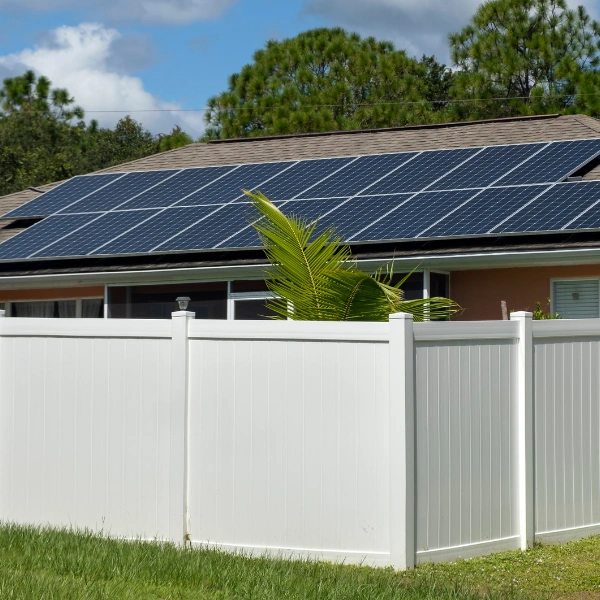
Today’s vinyl fence material often contains titanium dioxide (TiO₂), which protects it from degrading due to UV ray exposure. Generally, vinyl resists temperature changes—great for hot climates because vinyl won’t expand much on a hot day. Vinyl fencing is a strong choice for homeowners who want long-lasting performance with little maintenance, especially in Phoenix’s tough climate.
Key benefits of vinyl fencing:
- Doesn’t conduct heat—comfortable to touch even in summer
- Cost-effective and long-lasting solution
- Low maintenance requirements
- Ideal for pool areas and family backyards
- Available in various styles and colors
Metal Fences: Security and Style Combined
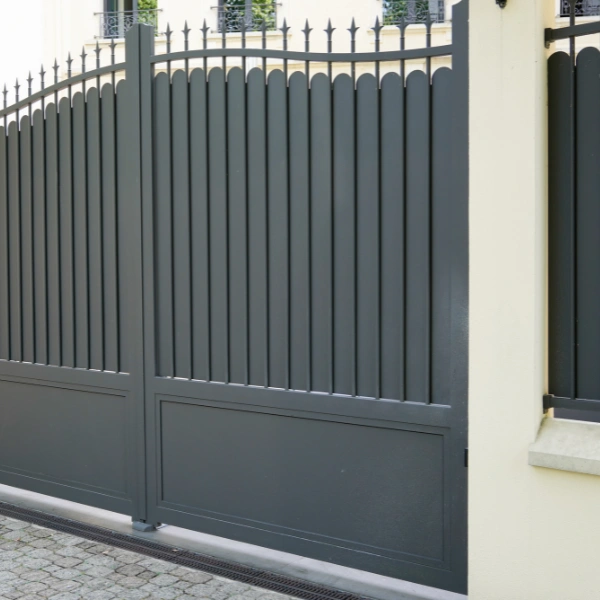
Metal fencing options provide superior security and durability in Arizona’s climate. The most popular choices include:
Popular metal fencing options for Arizona homes:
- Aluminum: Resistant to rust and corrosion with various design options to complement your property’s aesthetic.
- Wrought iron: Beautiful, elegant, and extremely durable, though more expensive than other options. We recommend powder-coated finishes for Arizona’s climate.
- Chain link with vinyl coating: Economical security solution that withstands sun exposure, often enhanced with decorative slats for privacy.
Privacy Fencing Strategies for Maximum Comfort
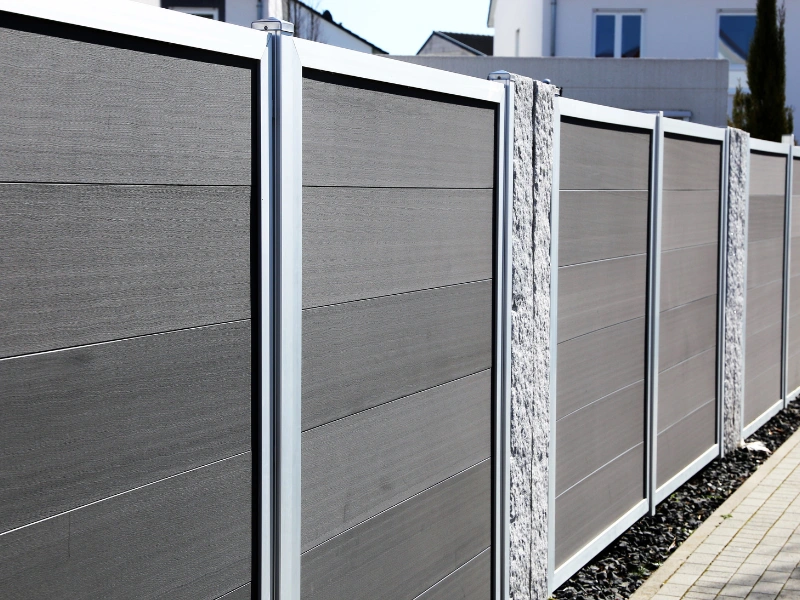
Phoenix homeowners typically install privacy fencing to create secluded outdoor living spaces shielded from neighbors and street traffic. Effective privacy solutions must consider both height and material density.
Key privacy fence considerations:
- Choose solid panels or boards with minimal gaps
- Install fences at least 6 feet tall for complete privacy
- Add desert-adapted shrubs and trees for enhanced seclusion
- Consider lattice toppers for properties with views you want to preserve
- Use alternating board patterns to balance privacy with airflow
Split Rail Fence Designs for Open, Welcoming Aesthetics
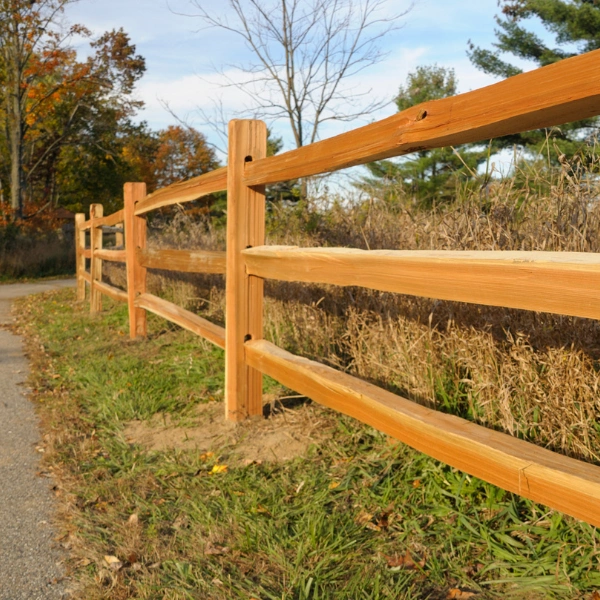
Split rail fencing creates a rustic, open feel perfect for larger Arizona properties or front yards where full privacy isn’t required. This traditional style uses horizontal rails mounted between posts, creating a ranch-like aesthetic that complements desert landscaping. For enhanced security, we often install welded wire mesh behind the rails to contain pets while maintaining the open appearance.
Professional Design Tips for Cohesive Curb Appeal

Your fence should complement your home’s architectural style rather than compete with it. For Spanish or Mediterranean homes, consider wrought iron or stucco walls with decorative elements. For modern desert homes, horizontal wooden slats or contemporary metal fencing create clean lines.
Color coordination tips:
- Match colors to your home’s exterior palette
- Remember, colors appear more intense in Arizona’s sunlight
- Lighter colors absorb less heat and may last longer
- Maintain consistent materials across visible fence sections
- Use higher-end materials in front-facing areas if the budget is limited
Fence Gate Design and Placement Strategies

Gates serve as focal points in your fencing design. For main entry points, consider wider gates (4-5 feet for pedestrian use, 10-12 feet for vehicles) with decorative elements like custom metalwork or lighting for enhanced curb appeal. Choose high-quality, rust-resistant hardware designed for Arizona’s temperature extremes, and consider automatic gate openers for convenience during summer heat.
Arizona Installation Challenges and Solutions
Installing fencing in Arizona presents unique challenges that require professional experience:
- Rocky, caliche-laden soil: Requires specialized equipment for proper post-hole digging—hand digging simply isn’t feasible in many areas.
- Weather timing considerations: Extremely hot summer days can complicate concrete setting for posts, while monsoon season may cause delays due to unstable soil conditions.
- Drainage requirements: While rainfall is infrequent, monsoon storms can create significant water flow.
Professional Installation Guarantees Long-Term Success
Ready to enhance your property with quality fencing designed specifically for Arizona’s climate? Our team of experienced professionals is dedicated to delivering exceptional fencing solutions tailored to your specific needs. Whether you need residential, commercial, or custom fences, we have you covered with top-quality craftsmanship and exceptional service.
- Phone: (480) 508-1998
- Request a Free Quote: Click here to get your personalized estimate
- Email: sales@theazfencecompany.com
Frequently Asked Questions About Residential Fencing
How much does it cost to put a fence around a house in Arizona?
Fencing costs in Phoenix (materials + installation) vary by type: wood $150–$400/ft, chain-link $100–$300/ft, vinyl $200–$500/ft, and wrought iron or aluminum $200–$600/ft, depending on complexity and design.
What is the cheapest option for fencing that still looks attractive?
One of the most affordable yet attractive fencing options is vinyl-coated chain link with privacy slats or decorative mesh, which softens the industrial look while keeping costs down. For a natural style, wood picket or split-rail fencing is another budget-friendly choice, though it may require more maintenance in Arizona’s climate.
What is the best type of fence for a house in Arizona’s climate?
Living in a hot climate means you should take care when selecting the material for your fence. It doesn’t mean you can’t have a durable, cost-effective, long-lasting, and attractive fence in your yard. Vinyl, aluminum, cedar, composite, and chain link are all great choices for homeowners living in warm climates.
